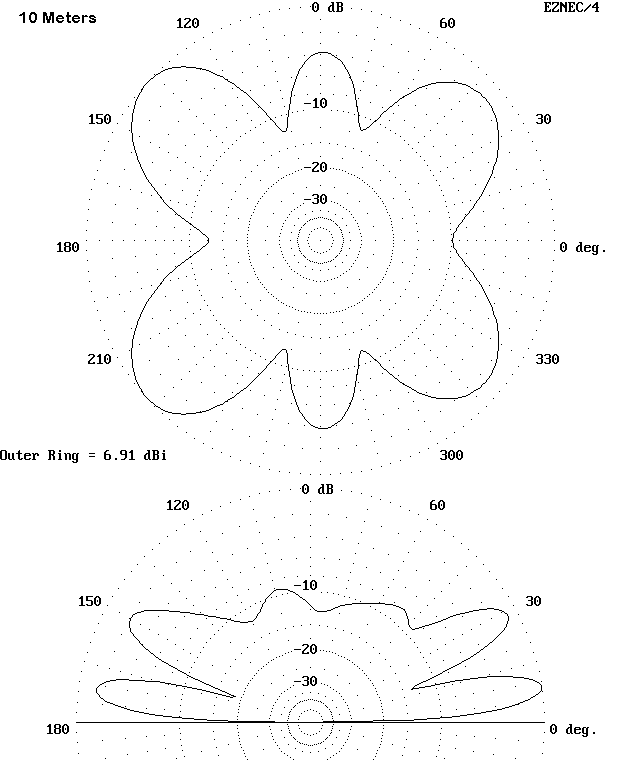 ANTENNAS FROM THE GROUND UP
ANTENNAS FROM THE GROUND UP
Suppose that you just cannot manage the 1/2 wl inverted-L for 80 meters that we featured in the preceding data compendium. However, you would like to do some 80-meter work. So a 40-meter version of the inverted-L seems a bit small. Is there a better answer?
One (but not the only) better answer is the 3/8 wl inverted-L. See the sketch.

The 3/8 wl inverted-L for 80 meters is about 47.6' (14.5 m) for each leg, taking up much less altitude and horizontal space than the 1/2 wl version with its 65.5' arms. Both feeding options are still open to us: we may feed the antenna with parallel transmission line at the top corner or we may bring the antenna near to ground and feed it at the base with a standard L-network tuner.
In either configuration, the antenna competes quite well against its big brother. The chief gain losses are on 80 meters, where the effects of the shorter arms show up most vividly. On the higher bands, performance differences are less noticeable.
In fact, there are wider variations in performance between the two versions of the 3/8 wl inverted-L than with the 2 versions of the 1/2 wl antenna. These differences result from the non- resonant length of the antenna wire. Feeding it at different points results in different current distributions along the wire on different bands.
Top-corner feed requires parallel transmission line to a wide- range balanced antenna tuner. Often, however, hams feed the antenna through an L-network placed right at the base of the vertical arm and well-grounded for RF. Although a good RF ground is essential, a ground plane immediately beneath the antenna is unnecessary and in fact does little if any good. As was the case with the 1/2 wl, moderate installation variations create few problems for operation of the antenna on all bands.
The following pages present azimuth and elevation plots of a 3/8 wl inverted-L cut for the middle of 80 meters and used on all the HF bands. The patterns and data are representative and will vary with the specifics of your situation. However, notice the absence of very high-angle radiation on any band. Moreover, even though the gain is almost always less than that of a 135' doublet, the patterns are smoother, with fewer and shallower nulls. For limited spaces, the 3/8 wl inverted-L may be a good choice for an all-band general operating antenna.
















Updated 10-15-2001. © L. B. Cebik, W4RNL. Data may be used for personal purposes, but may not be reproduced for publication in print or any other medium without permission of the author.